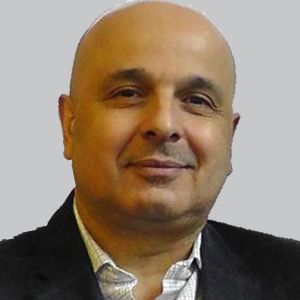Commentary
Article
NeuroVoices: Joseph Sullivan, MD, on Exploring Antisense Oligonucleotides for Dravet Syndrome, Rare Epilepsies
Author(s):
The director of the Pediatric Epilepsy Center at UCSF provided perspective on STK-001, a promising antisense oligonucleotide in development, and the shift in how Dravet syndrome is discussed and managed.
Joseph Sullivan, MD

Dravet syndrome (DS), previously known as severe myoclonic epilepsy of infancy, is an intractable developmental and epileptic encephalopathy that begins in infancy and proceeds with accumulating morbidity that significantly impacts individuals throughout their lifetime. The disorder has genetic implications, as SCN1A mutations can be found in more than 85% of diagnosed patients. Mutations that cause DS generally occur de novo, but less commonly can be inherited.
At the recently concluded 35th International Epilepsy Congress (IEC), held September 2-6, in Dublin, Ireland, Stoke Therapeutics presented 4 posters on its investigational agent STK-001 (Stoke Therapeutics), a proprietary antisense oligonucleotide (ASO) aimed to address the genetic cause of DS. STK-001 is designed to upregulate NaV1.1 protein expression by leveraging the non-mutant copy of the SCN1A gene to restore physiological NaV1.1 levels, thereby reducing both the occurrence of seizures and significant non-seizure comorbidities.
Interim data from the phase 1/2 MONARCH and ADMIRAL studies showed that single and multiple doses of STK-001 up to 70 mg were well tolerated, with substantial and sustained reductions in convulsive seizure frequency. In addition, a pharmacokinetic analysis of 61 patients treated in STK-001 trials showed a relationship between STK-001 brain exposure and convulsive seizure frequency, with higher exposure leading to greater reductions. Data from BUTTERFLY, a natural history study, showed small but significant improvements in receptive communication at month 12, with little to no changes in other measures of cognition and behavior.
After the meeting’s conclusion, NeurologyLive® sat down with DS expert Joseph Sullivan, MD, to learn more about STK-001 and its potential as a new therapeutic. Sullivan, director of the Pediatric Epilepsy Center at UCSF, discussed the potential for ASOs in the treatment paradigm for genetic epilepsy, and why they mechanistically produce benefits. As part of a new iteration of NeuroVoices, Sullivan discussed the shift in how DS is treated, recent advances in the field, and the exciting emerging concepts to come out of research.
NeurologyLive®: Could you please provide an overview of the presentations made at this year's IEC?
Joseph Sullivan, MD: Certainly, there was a wealth of data presented at this year's IEC, particularly from the Stoke program. We began by revisiting the initial natural history study, which has been ongoing for over two years. The interim 12-month analysis of this study, known as the "Butterfly study," was presented. This study laid a crucial foundation for our subsequent discussions. While some smaller natural history studies have been conducted previously, they lacked the rigor of a prospective approach that focused on the most relevant measures of common comorbidities. Our study honed in on language behavior, cognition, and gait.
The results from this study confirmed what we have clinically suspected for a long time – that patients with Dravet syndrome make slow and subtle gains over time, primarily in receptive communication. However, in other domains such as cognition, executive function, and behavior, there appears to be either a plateau or a widening gap compared to their age-matched peers. This observation is emblematic of the developmental and epileptic encephalopathies, and it underscores the importance of addressing these domains, which are equally, if not more, critical to caregivers than the seizures themselves.
Why do we believe that antisense oligonucleotides like STK-001 can be effective in treating Dravet syndrome?
Yes, this is an incredibly exciting time, especially for someone like me who specializes in pediatric epilepsy and has a keen interest in Dravet syndrome and other developmental and epileptic encephalopathies. I vividly recall families asking me five or six years ago about the prospects of gene therapy becoming a reality for Dravet syndrome. Back then, I had reservations and believed it might not happen in my career, at least not in the manner we hoped for. The challenge was that traditional gene packaging approaches weren't well-suited for large genes like SCN1A. Furthermore, there was limited preliminary evidence.
The advent of antisense oligonucleotide (ASO) therapy has been a transformative educational experience for me. It makes logical sense by leveraging cellular genetic redundancies to target splice sites and prevent nonsense-mediated decay, which is already occurring in the messenger RNA transcript. We've seen successful ASO therapies for other central nervous system diseases, such as spinal muscular atrophy. This development is exciting for the broader field of pediatric epilepsy. Not long ago, obtaining genetic testing for our patients was a struggle. With the genetic etiology now known for these syndromes, we can not only tailor anti-seizure medications more effectively based on the underlying mechanism but also explore treatments like ASOs that address the exact cause. I'm particularly excited about the potential impact of STK-001 if it passes a phase three clinical trial and is approved, especially when introduced earlier in the disease progression, before patients reach a refractory stage.
How have the goals and conversations surrounding the treatment of Dravet syndrome evolved in recent years?
The landscape of treating Dravet syndrome and other epilepsies has evolved significantly in recent years. Much of what I learned during my training is now considered outdated, a testament to the rapid pace of medical advancements. One major shift is the emphasis on achieving the most precise diagnosis possible. Gone are the days when we classified epilepsy broadly as focal or generalized and identified epilepsy syndromes. Now, we aim to pinpoint well-defined clinical phenotypes supported by underlying genetic causes.
For instance, the diagnosis of Lennox-Gastaut syndrome, once a catch-all term, now recognizes multiple etiologies. These etiologies inform our treatment strategies. This approach has facilitated translational research, as new genes are discovered, leading to novel drug candidates that may not have been considered for epilepsy in the past.
In the case of Dravet syndrome, there has been a remarkable transformation in the last six years. We went from having no FDA-approved medications for Dravet syndrome to now having three. Earlier diagnosis, avoiding contraindicated medications, and initiating safe and effective treatments have already improved long-term outcomes to some extent. However, these treatments remain symptomatic. Discussions at the IEC indicated a shift in our thinking, where clinicians are increasingly focused on addressing more than just seizures. We now have a growing toolbox of tools and therapies to treat the entire patient and address the entire syndrome comprehensively.
What are some of the unanswered questions about the drug, particularly in terms of its use? Who might benefit the most from it, and can you discuss the lingering questions surrounding this medication?
One of the primary questions that remains is related to dosing, specifically the optimal dose and dosing interval. Reflecting on the early stages of this drug's development, when I enrolled my first patient at a 10-milligram dose in the initial human trials, we were uncertain about its safety profile. Over the years, we have gained a much clearer understanding of the drug's safety, which is overall quite favorable. Now, we face the challenge of striking the right balance between increasing the dose to maximize efficacy while maintaining a safe profile.
Another significant unknown is the time it takes for this drug to reach its maximum effect. Unlike benzodiazepines, which can quickly reduce seizures, genetic therapies like this one require time for messenger RNA to upregulate, translate into functional sodium channels (in this case, nav 1.1 sodium channels), and repair the perturbed neural network that has been disrupted for years. The exact duration of this process is uncertain – will it take six months, a year, or longer? While existing data suggest we should begin to see positive results, we might continue to observe benefits beyond what the initial clinical trial duration indicates.
Looking ahead, what can the epilepsy community anticipate in the next 5-10 years?
Certainly, genetic testing holds immense promise for the epilepsy community, particularly in early-life epilepsies with onset within the first two to three years of life. Historically, these patients are at risk not only for treatment-resistant epilepsy but also for various developmental comorbidities. Their seizures occur during critical neurodevelopmental periods. The direction the field is heading in involves obtaining precise genetic characterizations, potentially as early as the second or third seizure episode. When a young individual with new-onset epilepsy and normal MRI results presents, genetic testing is becoming the reflex next step.
This approach allows us to utilize gene panels that encompass hundreds of genes. While our ability to diagnose has outpaced our understanding of how to manage this genetic information, this is poised to change rapidly. As more genetic testing is performed, clinicians will accumulate cases of seemingly rare disorders. These clinicians will begin sharing their experiences, such as which medications work best and which ones don't. This sharing of knowledge will help in building a better understanding of these genetic syndromes and identifying optimal treatment approaches.
Simultaneously, translational scientists are exploring therapies like ASOs, aiming for more logical and precision-based medicine approaches. The goal is to emulate infectious disease treatment, where a specific test results in a tailored medication regimen. In epilepsy, the vision is to use genetic testing to recommend specific classes of medications that offer the best chances of a favorable outcome. This direction represents a significant step forward in the field of epilepsy treatment.
Transcript was edited by artificial intelligence. Click here for more iterations of NeuroVoices.
Newsletter
Keep your finger on the pulse of neurology—subscribe to NeurologyLive for expert interviews, new data, and breakthrough treatment updates.




